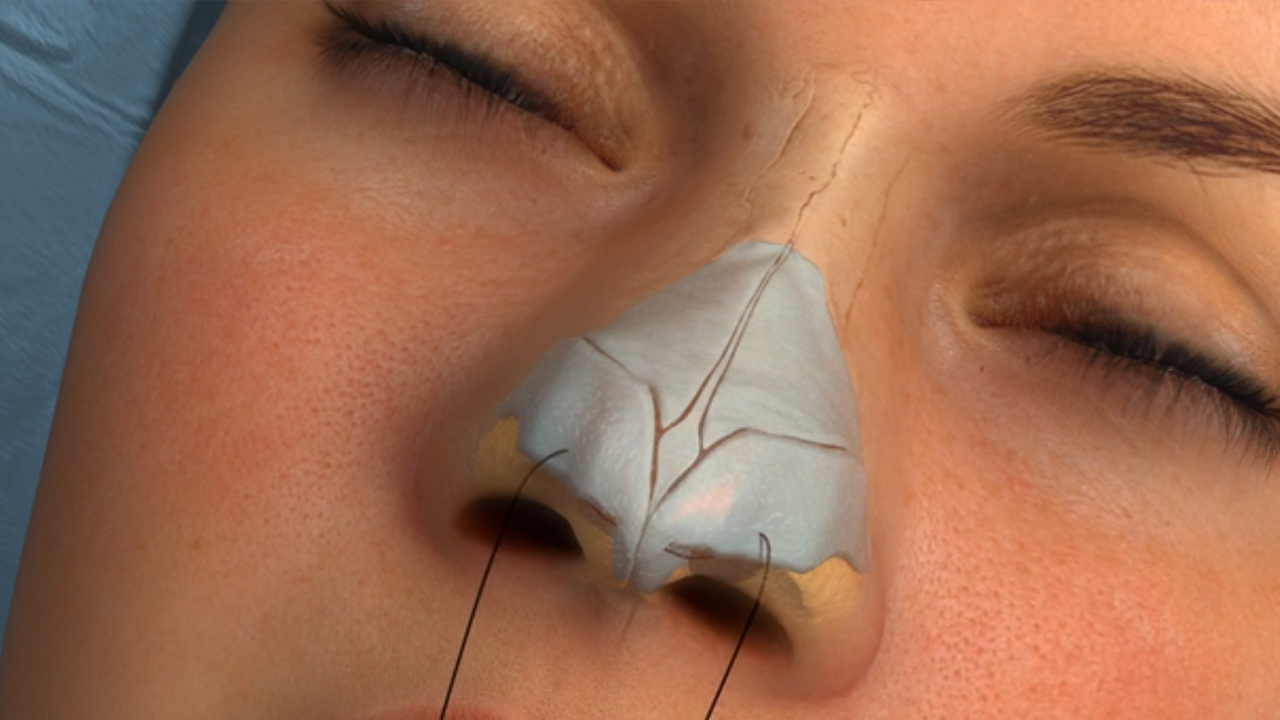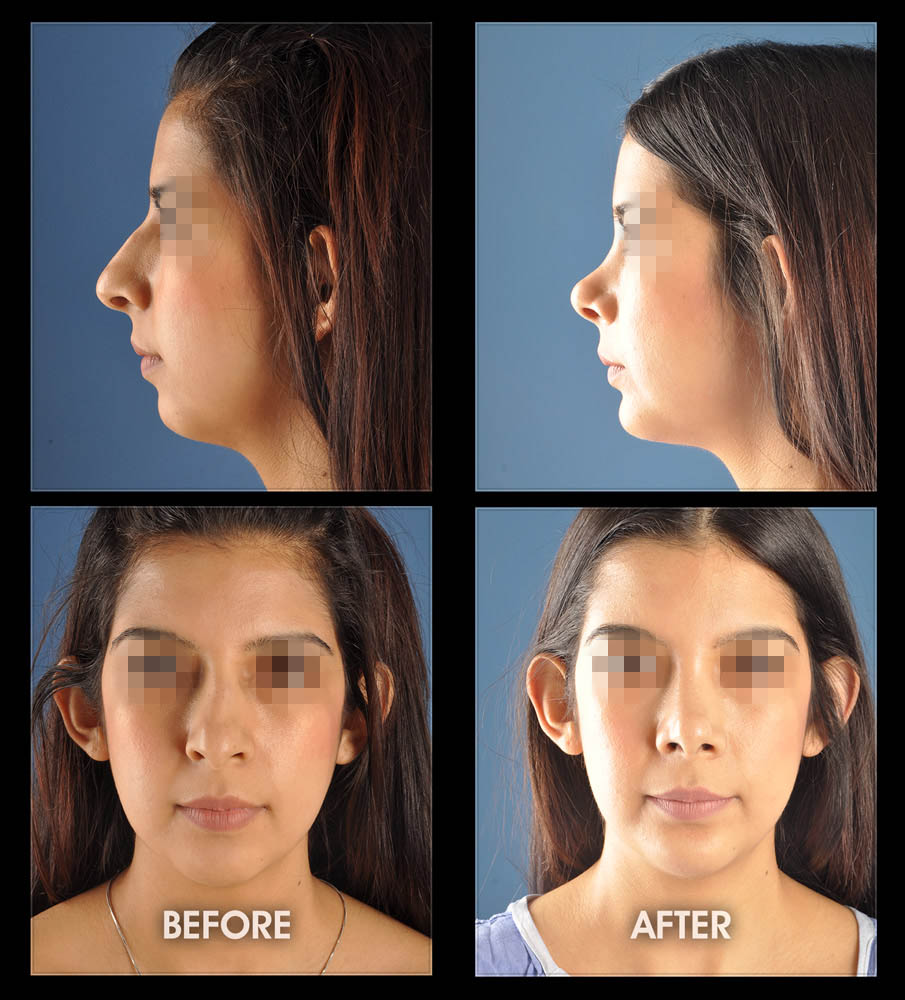Excitement About Nose Job
Table of Contents5 Easy Facts About Nose Job DescribedAustin Rhinoplasty Surgery Things To Know Before You Get ThisExcitement About Rhinoplasty Surgery Austin Tx
Picture 4. Nasal bulge excision: The black delineation indicates the wanted nose-reduction outcome: a straight nose. The nasal hump is bone (red) above the scalloped grey line, and cartilage (blue) listed below the scalloped grey line. The cosmetic surgeon cuts the cartilage part of the hump with a scalpel, and chisels the bone part with an osteotome (bone sculpt).Rhinoplastic instruments: Bone-scraping rasps, of different grades and types, that the plastic surgeon uses to refine the corrections needed to produce a brand-new nose. In plastic surgical praxis, the term primary nose surgery signifies an initial (first-time) reconstructive, practical, or aesthetic restorative treatment. The term secondary rhinoplasty represents the modification of a stopped working rhinoplasty, an occurrence in 520 per cent of rhinoplasty operations, for this reason a revision rhinoplasty.
Although many revision nose surgery procedures are "open technique", such a correction is more technically made complex, typically because the nasal support structures either were warped or ruined in the main nose job; therefore the cosmetic surgeon should re-create the nasal support with cartilage grafts collected either from the ear (auricular cartilage graft) or from the rib cage (costal cartilage graft).
In reconstructive nose job, the defects and defects that the plastic surgeon encounters, and should restore to typical function, kind, and appearance consist of broken and displaced nasal bones; interrupted and displaced nasal cartilages; a collapsed bridge of the nose; congenital problem, injury (blunt, permeating, blast), autoimmune disorder, cancer, intranasal drug-abuse damages, and failed primary rhinoplasty outcomes.
When cartilage is interrupted, suturing for re-suspension (structural assistance), or the use of cartilage grafts to camouflage an anxiety enable the re-establishment of the normal nasal shape of the nose for the patient. When the bridge of the nose is collapsed, rib-cartilage, ear-cartilage, or cranial-bone grafts can be used to restore its structural integrity, and therefore the visual continuity of the nose.

The smart Trick of Rhinoplasty Austin Tx That Nobody is Discussing
Surgically, the borders of the nasal subunits are ideal areas for the scars, whereby is produced a superior aesthetic result, a corrected nose with corresponding skin colors and skin textures. Nasal skeleton Therefore, the effective rhinoplastic outcome depends completely upon the particular maintenance or remediation of the anatomic integrity of the nasal skeleton, which makes up (a) the nasal bones and the rising procedures of the maxilla in the upper third; (b) the paired upper-lateral cartilages in the middle 3rd; and (c) the lower-lateral, alar cartilages in the lower third (nose job).
The paired alar cartilages configure a tripod-shaped union that supports the lower third of the nose. The paired median crura conform the central-leg of the tripod, which is connected to the anterior nasal spinal column and septum, in the midline. The lateral crura make up the second-leg and the third-leg of the tripod, and are connected to the (pear-shaped) pyriform aperture, the nasal-cavity opening at the front of the skull.
the nasal lining A thin layer of vascular mucosa that adheres tightly to the deep surface area of the bones and the cartilages check out here of the nose. Said thick adherence to the nasal interior limitations the mobility of the mucosa, as a result, just the tiniest of mucosal defects (< 5 mm) can be sutured primarily.

Additionally, relating to scarrification, when compared to the skin of other facial locations, the skin of the nose produces fine-line scars that generally are inconspicuous, which allows the cosmetic surgeon to strategically hide the surgical scars. Concepts The technical concepts for the surgical reconstruction of a nose obtain from the necessary personnel principles of plastic surgical treatment: that the applied treatment and method( s) yield the most satisfying practical and aesthetic outcome.
However, the physician-surgeon and the rhinoplasty patient need to abide the truth that the rebuilded nasal subunit is not a nose proper, but a collagen- glued collageof forehead skin, cheek skin, mucosa, vestibular lining, nasal septum, and fragments of ear cartilagewhich is perceived as a nose this hyperlink just because its shape, skin color, and skin texture are real to the initial nose - austin rhinoplasty surgery.
Getting My Nose Job To Work
1. 0 metre). Yet, such an aesthetic outcome suggests the application of a more complex surgical technique, which requires that the surgeon balance the patient's click reference required rhinoplasty, with the client's visual perfect (body image). In the context of surgically reconstructing the client's physiognomy, the "normal nose" is the three-dimensional (3-D) design template for changing the missing part( s) of a nose (visual nasal subunit, aesthetic nasal section), which the cosmetic surgeon re-creates using firm, malleable, modelling materialssuch as bone, cartilage, and flaps of skin and of tissue.
To effect a total nasal reconstruction, the template may derive from quotidian observations of the "normal nose" and from pictures of the patient prior to he or she suffered the nasal damage (rhinoplasty). The cosmetic surgeon changes missing out on parts with tissue of like quality and quantity; nasal lining with mucosa, cartilage with cartilage, bone with bone, and skin with skin that best match the native skin color and skin texture of the harmed nasal subunit.
Furthermore, in spite of its noteworthy scarring tendency, the nasal skin flap is the prime consideration for nasal restoration, since of its higher verisimilitude. The most efficient nasal reconstruction for fixing a problem (wound) of the nasal skin, is to re-create the whole nasal subunit; thus, the injury is bigger to understand the entire nasal subunit.